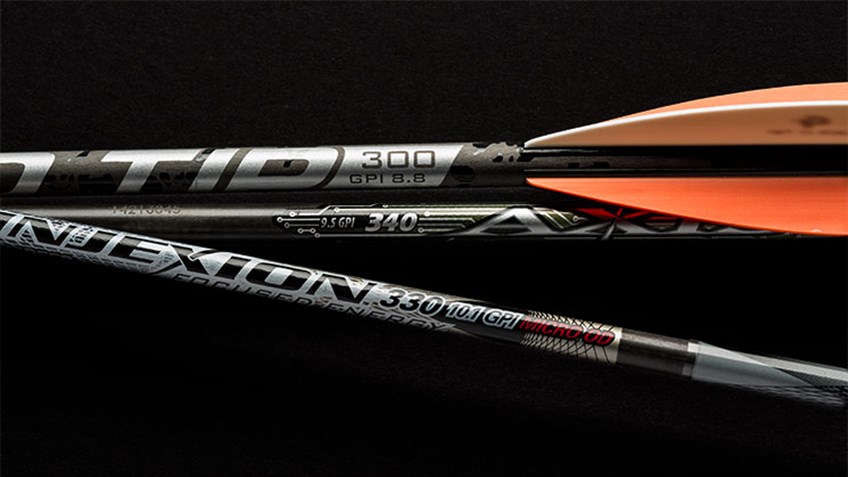
About 15 years ago I hunted pronghorns over a waterhole on the windswept plains of Wyoming. Because I was protected from the howling wind by my pop-up blind, I watched in amazement as a huge tumbleweed flew across the prairie at what seemed like 40 mph. Realizing I was faced with a 40-yard shot to the waterhole, I began to worry about the effect that wind would have on my arrow.
I hadn’t practiced much in such a crazy wind, and I had no idea how much to compensate for it. So the next day I brought a Block target with me and set it up 40 yards from the blind. My first shot impacted way right of where I’d aimed. After five shots, I found I could hit the target by holding a couple feet into the wind.
Later, when an antelope sauntered in to 52 yards, I held well behind his vitals and let an arrow fly. The buck died within seconds, and I was proud of myself for making the tricky shot. But as I approached the buck, I saw that I’d simply been lucky. I’d hit the animal in the throat; the wind had pushed it nearly a foot farther than I’d anticipated. From that day forward, I’ve been even more careful to consider the wind before shooting.

Unfortunately there is no easy formula for calculating arrow wind drift because there are so many variables, including fluctuating wind speeds and directions, distance to the target, arrow velocity, arrow weight, shaft diameter, arrow length and material, broadhead design, fletching size, helical orientation of the vanes … and more. Just know that it isn’t uncommon for a typical arrow shot into a 30 mph, 90-degree crosswind to drift more than 25 inches at 60 yards. In a 20 mph wind—which is common in the West—an arrow can impact more than 5 inches from point of aim at 40 yards. Same goes for an arrow in a 30 mph wind at 30 yards. When dealing with 10 mph winds anywhere inside my max range of 60 yards, I don’t worry much. But in winds of more than 10 mph, factor the wind before you shoot—or consider not shooting at all.
Wind speed and angle, along with the distance to the target, are primary factors in determining arrow drift, and these are different in every situation. However, your arrow’s aerodynamic properties, its weight and its velocity are also important factors, and these you can control. A faster arrow drifts less than a slower one, while a heavier arrow is less affected by wind than a lighter one. Obviously, a fast, heavy arrow is superior in the wind. An arrow with 6 grains per pound of draw weight is ideal.
Most critical, however, is the arrow’s drag factor, or how well it slips through air. For minimum wind drift, short-as-possible, small-diameter arrows wearing low-profile, stiff fletching and mechanical broadheads are best. In essence, to mitigate the effect of wind, strive to reduce your arrow’s surface area. But keep in mind the arrow can’t be so light that it quickly loses momentum, the broadhead so narrow that it doesn’t effectively kill or the fletching so minimal that it doesn’t properly stabilize the arrow. These days hunters can reduce wind-drift by up to nearly 60 percent compared to large-diameter, high-drag arrows of old simply by using modern, aerodynamic arrow components.

Archers who routinely hunt in heavy winds also reduce the surface area of their bows by removing long, thick stabilizers, quivers and even bulky sights so they don’t catch as much wind while trying to aim. Tent-style ground blinds can also make holding steady easier, but at the same time they can trick hunters into misjudging the wind between them and the target. Keep this in mind when hunting from a blind.
The only way to know how your particular setup will behave in the wind is to practice in the wind. It helps immensely to use a wind gauge so you’ll learn how certain wind speeds look as they rustle leaves, sway grass and move tree branches. Then shoot groups in that wind to determine how it affects your arrow’s point of impact at various ranges. Measure the distance between the center of your groups and your point of aim to identify patterns. Producing a truly useful wind dope chart requires practice, with the same arrows and broadheads you plan to use when hunting, over many days with varying wind speeds and angles.
For many bowhunters, this is too tedious with too many variables, and so over time they simply develop a feel for how much they should compensate for common winds. They also learn when the wind and range is too great for consistent accuracy. For example, if a deer-sized target is more than 30 yards away and the wind is blowing at what I think is more than 30 mph, either I wait for a lull or I don’t shoot. A rough rule of thumb I use is as follows: For shots of 10-30 yards in winds of 10-30 mph, I shade 2-3 inches to the upwind side of the vital zone.
It’s also possible to compensate for wind by holding your sight pin on the ideal point of aim and then using your bubble level to cant your bow into the wind. With no wind, your arrows will impact in the direction of the lean. Practice by canting your bow by a quarter-bubble, half-bubble and full bubble to glean point-of-impact data on a calm day before applying that data on a windy one. While “bubbling” can adversely affect your sight pins’ vertical compensation at long range, some hunters use this trick very effectively for shots inside 40 yards. Personally, I prefer the hold-off method because I must only change my sight picture and not my shooting form.
Any way you slice it, if you fail to account for wind at mid- to long-range targets, you’ll miss your target, or worse, wound an animal. That’s not why we bowhunt. Practice in the wind and learn how to deal with it, or pass on shots at game when it’s windy.




































